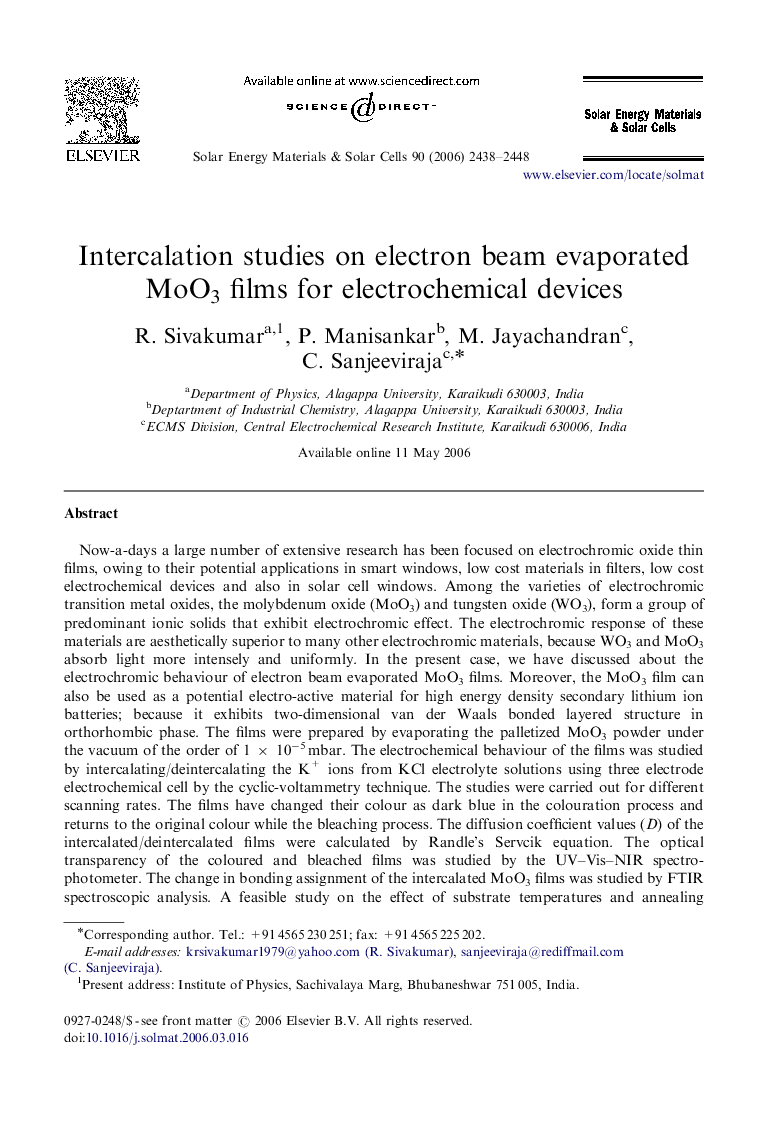| کد مقاله | کد نشریه | سال انتشار | مقاله انگلیسی | نسخه تمام متن |
|---|---|---|---|---|
| 80921 | 49409 | 2006 | 11 صفحه PDF | دانلود رایگان |

Now-a-days a large number of extensive research has been focused on electrochromic oxide thin films, owing to their potential applications in smart windows, low cost materials in filters, low cost electrochemical devices and also in solar cell windows. Among the varieties of electrochromic transition metal oxides, the molybdenum oxide (MoO3) and tungsten oxide (WO3), form a group of predominant ionic solids that exhibit electrochromic effect. The electrochromic response of these materials are aesthetically superior to many other electrochromic materials, because WO3 and MoO3 absorb light more intensely and uniformly. In the present case, we have discussed about the electrochromic behaviour of electron beam evaporated MoO3 films. Moreover, the MoO3 film can also be used as a potential electro-active material for high energy density secondary lithium ion batteries; because it exhibits two-dimensional van der Waals bonded layered structure in orthorhombic phase. The films were prepared by evaporating the palletized MoO3 powder under the vacuum of the order of 1 × 10−5 mbar. The electrochemical behaviour of the films was studied by intercalating/deintercalating the K+ ions from KCl electrolyte solutions using three electrode electrochemical cell by the cyclic-voltammetry technique. The studies were carried out for different scanning rates. The films have changed their colour as dark blue in the colouration process and returns to the original colour while the bleaching process. The diffusion coefficient values (D) of the intercalated/deintercalated films were calculated by Randle's Servcik equation. The optical transparency of the coloured and bleached films was studied by the UV–Vis–NIR spectrophotometer. The change in bonding assignment of the intercalated MoO3 films was studied by FTIR spectroscopic analysis. A feasible study on the effect of substrate temperatures and annealing temperatures on optical density (OD) and colouration efficiency of the films were discussed and explored their performance for the low cost electrochemical devices.
Journal: Solar Energy Materials and Solar Cells - Volume 90, Issue 15, 22 September 2006, Pages 2438–2448